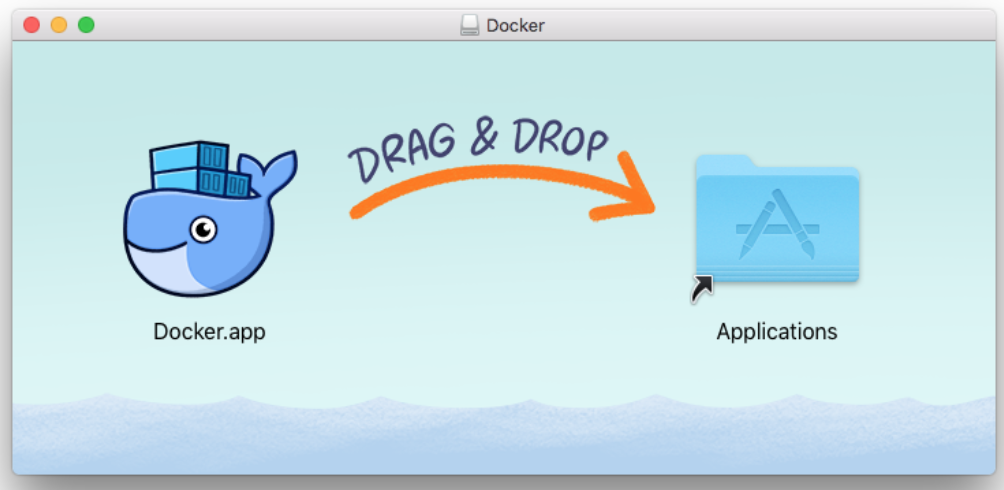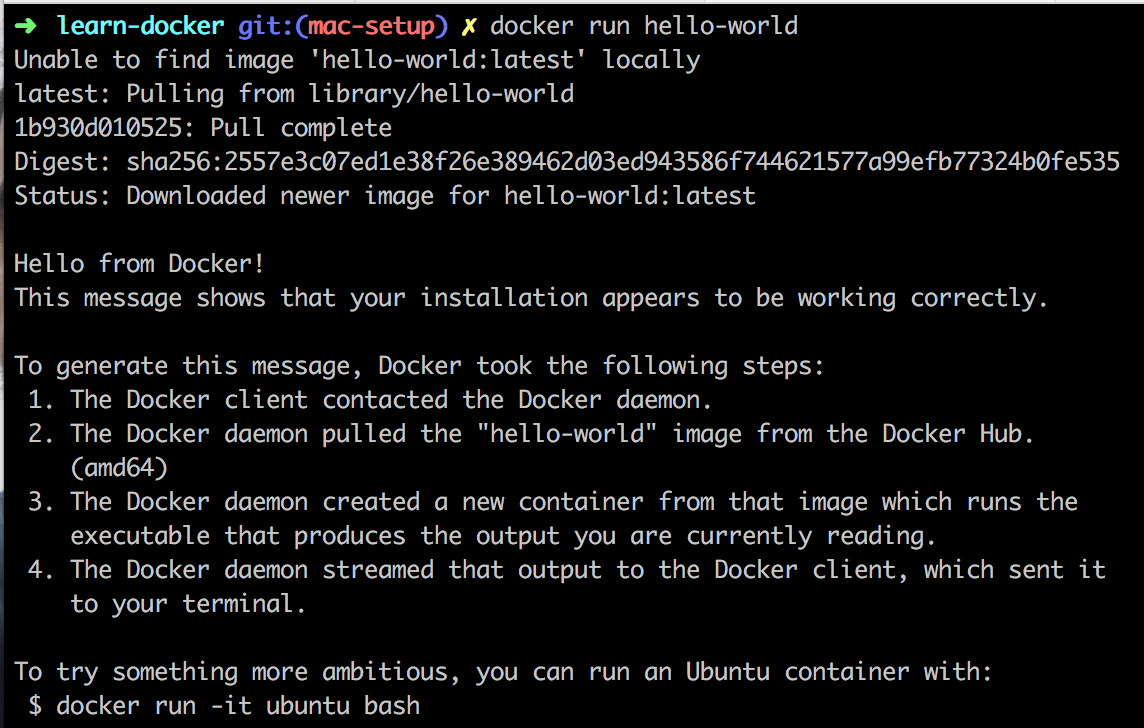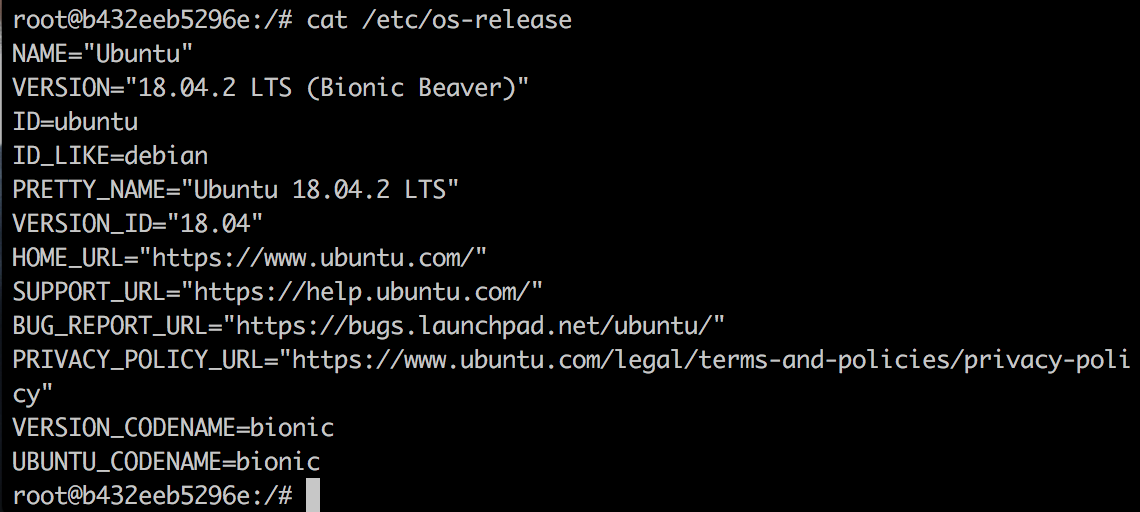https://github.com/dwyl/learn-docker
🚢 Learn how to use docker.io containers to consistently deploy your apps on any infrastructure.
https://github.com/dwyl/learn-docker
Last synced: 10 months ago
JSON representation
🚢 Learn how to use docker.io containers to consistently deploy your apps on any infrastructure.
- Host: GitHub
- URL: https://github.com/dwyl/learn-docker
- Owner: dwyl
- Created: 2014-09-10T07:32:34.000Z (over 11 years ago)
- Default Branch: master
- Last Pushed: 2024-01-22T16:17:14.000Z (almost 2 years ago)
- Last Synced: 2024-07-31T21:54:34.853Z (over 1 year ago)
- Language: Dockerfile
- Homepage:
- Size: 40 KB
- Stars: 230
- Watchers: 40
- Forks: 32
- Open Issues: 10
-
Metadata Files:
- Readme: README.md
Awesome Lists containing this project
- awesome-docker - Learn Docker - by-step tutorial and more resources (video, articles, cheat sheets) by [@dwyl](https://github.com/dwyl) (Uncategorized / Uncategorized)
- awesome-docker-cn - Learn Docker - by-step tutorial and more resources (video, articles, cheat sheets) by [@dwyl](https://github.com/dwyl) (介绍)
- fucking-awesome-docker - Learn Docker - by-step tutorial and more resources (video, articles, cheat sheets) by [@dwyl](https://github.com/dwyl) (Uncategorized / Uncategorized)
- awesome-docker - Learn Docker - by-step tutorial and more resources (video, articles, cheat sheets) by [@dwyl](https://github.com/dwyl) (Uncategorized / Uncategorized)
- awesome-docker - Learn Docker - by-step tutorial and more resources (video, articles, cheat sheets) by [@dwyl](https://github.com/dwyl) (Uncategorized / Uncategorized)
README
Docker: Believe the Hype!
============

Learn how to use docker.io containers to consistently deploy
your apps on any infrastructure.
## Why?
Have you ever struggled to get your developer environment set up as a new user on
an existing project? Or have you ever had difficulty reproducing a bug or error
that another team member is experiencing? Or that only exists in your production
environment but not in your development environment? If you have, then you have
encountered some of the difficulties that can arise when code is run in different
environments. Docker is the solution to these problems as well as
offering a host of other benefits.
Docker containers offer the isolated environment advantages of running a virtual
machine, but are more lightweight, portable, scalable and have less overhead/hassle.
- reduce the delay between writing code and running it in production
- automation of the environment set up saves time setting up new users and time
trying to reproduce bugs/errors
- easily create [sandboxes](https://en.wikipedia.org/wiki/Sandbox_%28computer_security%29)
- reduces ‘dependency hell’
- easy to perform deployment rollbacks
- Good for legacy, native, Linux and Windows based apps
## What?
- Docker’s official definition is that it’s ‘an open platform for developing,
shipping, and running applications’.
- It provides you with the ability to package and run an application in a loosely
isolated environment called a container.
- Your defined environment (dependency versions and environment variables) can
then be run by whomever is working on / viewing the application. This means that
everyone can have the same experience.
- To create this isolated environment for your application put it into a
‘container’ (a standardised unit of software):
[**Container**](https://www.docker.com/resources/what-container)
> A container is a standard unit of software that packages up code and all its
dependencies so the application runs quickly and reliably from one computing
environment to another.
**Container image**
> A Docker container image is a lightweight, standalone, executable package of
software that includes everything needed to run an application: code, runtime,
system tools, system libraries and settings. Container images become containers
at runtime and in the case of Docker containers - images become containers when
they run on [Docker Engine](https://www.docker.com/products/docker-engine).
- Read the *official* "Docker overview" (10 minute read):
https://docs.docker.com/engine/docker-overview/
- Watch this 12 minute video on what Docker is and a simple example of how to
use it: https://youtu.be/YFl2mCHdv24. Follow along with the example if you want
to test it out for yourself!
## How?
### Installation
+ Mac: https://docs.docker.com/docker-for-mac/install/
+ Windows: https://docs.docker.com/docker-for-windows/install/
+ Linux: you already have LXC but can install a native docker package
by clicking "Linux" and selecting your distro from the list or installing
a binary: https://docs.docker.com/install/linux/docker-ce/binaries/
Mac example walk through:
1. Create a Docker Hub account: https://hub.docker.com/ You need an account to
be able to download Docker Desktop. Docker Hub lets you store your docker files
(public & private) so you can share these with people and deploy them anywhere.
2. Download Docker Desktop for Mac: https://hub.docker.com/editions/community/docker-ce-desktop-mac
The file is **546.8MB** and you need Mac OS Sierra or later, and to have at
least 4GB of RAM.
3. Install Docker Desktop on your Mac.
Open the `docker.dmg` file you downloaded, and drag the Docker app's whale icon
into your Applications folder.

4. Open and run Docker
When you run the Docker app, a little whale icon will appear on the right-hand
side of the menu bar at the top of your screen. It might take a few minutes to
get running, and Docker may ask your permission to use services on your computer.
The app will also prompt you to enter your Docker Hub account details.
## Once installed
Once you've installed Docker, opened it and signed in to your account you can
now open a command-line terminal, and try out some Docker commands.
- Try `docker version` to check that you have the latest release installed.
- Or run `docker run hello-world` to verify that Docker is pulling images and running as expected.
You should see something like this in your terminal:

As it suggests, next try to run an ubuntu container (*only do this on a fast
internet connection as its going to download 65mb ubuntu image*)
```sh
docker run -it ubuntu bash
```

This will boot the Ubuntu image and log you into the container's bash.
You can confirm that you are in a Linux bash by running the following
command: `cat /etc/os-release`

List the containers:
```sh
docker container ls
```
Which shows:

See: https://docs.docker.com/engine/reference/commandline/container_ls/ for ways
to make this command more specific.
And for even more detail, run `docker info`
```sh
Containers: 2
Images: 6
Storage Driver: aufs
Root Dir: /mnt/sda1/var/lib/docker/aufs
Backing Filesystem: extfs
Dirs: 10
Dirperm1 Supported: true
Execution Driver: native-0.2
Logging Driver: json-file
Kernel Version: 4.0.9-boot2docker
Operating System: Boot2Docker 1.8.1 (TCL 6.3); master : 7f12e95 - Thu Aug 13 03:24:56 UTC 2015
CPUs: 1
Total Memory: 1.956 GiB
Name: default
ID: VIPW:LYBS:LT7I:KWTS:DU5U:W2NG:MWMH:EQNS:PFTF:4ZLN:STYL:4HG2
Debug mode (server): true
File Descriptors: 9
Goroutines: 20
System Time: 2015-08-16T22:27:21.593654583Z
EventsListeners: 0
Init SHA1:
Init Path: /usr/local/bin/docker
Docker Root Dir: /mnt/sda1/var/lib/docker
Labels:
provider=virtualbox
```
### Run the `Dockerfile` in this repo
First build the image:
```sh
docker build -t learn-docker .
```
Then run the image as a container:
```sh
docker run -it -p 8888:8888 learn-docker bash
```
> https://docs.docker.com/v17.09/engine/reference/commandline/run/
Exec (for running a command in a running container)
```sh
docker exec -it learn-docker bash
```
> https://docs.docker.com/v17.09/engine/reference/commandline/exec/
### List (*Locally Available*) Images
View the current (*locally*) available docker images:
```sh
$ docker images
```
You should see:
```sh
REPOSITORY TAG IMAGE ID CREATED VIRTUAL SIZE
learn-docker latest 0c495aa0e6dc Less than a second ago 261.6 MB
ubuntu 14.04 8251da35e7a7 8 days ago 188.4 MB
ubuntu latest 8251da35e7a7 8 days ago 188.4 MB
hello-world latest af340544ed62 9 days ago 960 B
```
### `docker ps`
To list all the running docker containers, use:
```sh
docker ps -a
```
> https://docs.docker.com/v17.09/engine/reference/commandline/ps/
### More info on a specific container
To get more detail on a container type: `docker inspect {imageid}`
e.g: in our case the container we are interested in has the id: **a205fc3a096f** so we run:
```sh
docker inspect a205fc3a096f
```
The complete output of this command is in:
[/**sample-docker-inspect.txt**](https://github.com/dwyl/learn-docker/blob/e8769347940dc13d8197742b9e232e3efd85ca8d/sample-docker-inspect.txt)
#### Just the IP address
If all we want is the container's IP address we run:
` docker inspect --format '{{ .NetworkSettings.IPAddress }}' a205fc3a096f`
where the last argument is the container (image) id.
Courtesy of: http://stackoverflow.com/a/20686101/1148249
### Kill a Container by ID
```sh
docker stop a205fc3a096f
```
> https://docs.docker.com/v17.09/engine/reference/commandline/stop/
## Help!
For some reason I'm unable to access the **nginx** server running inside the docker container ...
looked at:
+ http://stackoverflow.com/questions/31324981/how-to-access-host-port-from-docker-container
+ http://stackoverflow.com/questions/31448249/how-to-deploy-web-service-on-docker-container
+ http://stackoverflow.com/questions/27714900/nginx-on-docker-daemonize-and-attach-to-bash
### is nginx working?
+ http://askubuntu.com/questions/443775/nginx-failing-to-reload-how-to-track-down-why
Test that your nginx configuration is valid (doesn't have errors)
```sh
sudo nginx -t
```
expect the following output:
```sh
nginx: the configuration file /etc/nginx/nginx.conf syntax is ok
nginx: configuration file /etc/nginx/nginx.conf test is successful
```
## Docker and ["PETE" stack](https://github.com/dwyl/technology-stack#the-pete-stack)
You can create or run a Phoenix application by using the following Dockerfile:
```
FROM elixir:1.7.3
RUN mix local.hex --force \
&& mix archive.install hex phx_new 1.4.0 --force \
&& apt-get update \
&& curl -sL https://deb.nodesource.com/setup_8.x | bash \
&& apt-get install -y apt-utils \
&& apt-get install -y nodejs \
&& apt-get install -y build-essential \
&& apt-get install -y inotify-tools \
&& mix local.rebar --force \
&& wget "https://github.com/elm/compiler/releases/download/0.19.0/binaries-for-linux.tar.gz" \
&& tar xzf binaries-for-linux.tar.gz \
&& mv elm /usr/local/bin/
ENV APP_HOME /app
WORKDIR $APP_HOME
CMD ["mix", "phx.server"]
```
This will create a container with Elixir, Node.js, Elm.
You can then use the following `docker-compose.yml` file to use Postgres with your application:
```
version: '3'
services:
app:
build: .
ports:
- "4000:4000"
volumes:
- .:/app
depends_on:
- db
env_file:
- ./.env
db:
image: postgres:10.5
ports:
- "5432:5432"
```
You can then create a new Phoenix application with:
`docker-compose run --rm app mix phx.new . --app name_of_the_app`
Make sure to update the database configuration in the Phoenix application to reference the Postgres service name (ie db), for example:
```elixir
# Configure your database
config :app_name, AppName.Repo,
username: "postgres",
password: "postgres",
database: "app_name_dev",
hostname: "db",
pool_size: 10
```
Use `docker-compose` if you want to run commands, for example to create the database:
`docker-compose run web mix ecto.create`
## Docker Swarm vs. Kubernetes
This repo has walked through the basic set up of Docker containers. To deal with
managing multiple containers there are container management facilities or container
orchestration platforms. These facilities are useful for:
- Running containers across many different machines
- Scaling up or down by adding or removing containers when demand changes
- Keeping storage consistent with multiple instances of an application
- Distributing load between the containers
- Launching new containers on different machines if something fails
Docker offers its own such facility called [Docker Swarm](https://docs.docker.com/engine/swarm/).
Another popular open source platform is [Kubernetes](http://kubernetes.io/).
Kubernetes must be used in conjunction with Docker containers, it is not a
complete alternative.
Docker Swarm and Kubernetes both have their pros and cons. Deciding which one to
use comes down to what is best for your project. But as a very brief summary,
Docker Swarm is considered easier to adopt with better usability than Kubernetes.
Whilst slower to initially learn, Kubernetes receives praise for its ability to
scale at speed for larger projects and its flexibility.
To find out more see:
- https://blog.containership.io/k8svsdocker
- https://technologyadvice.com/blog/information-technology/kubernetes-vs-docker/
## Useful Links
### About Docker
- Light-hearted Slideshow (with adequate detail to read through it) about what
Docker is and how it is useful: https://www.slideshare.net/jpetazzo/docker-automation-for-the-rest-of-us
### Cheat Sheet
- Command Line Reference: https://docs.docker.com/engine/reference/commandline/cli/
- Cheat Sheet: https://github.com/wsargent/docker-cheat-sheet
- Cheat Sheet: https://spacelift.io/blog/docker-commands-cheat-sheet
### Videos
- Introduction to Docker - (Twitter University):
https://www.youtube.com/watch?v=Q5POuMHxW-0 47mins - 2mins of *content*!
- Be a happier developer with Docker:
https://www.youtube.com/watch?v=XCVOxht34Hs 25mins - relevant to developers
### Tutorials
- https://www.imore.com/how-run-docker-your-mac
- http://blog.xebia.com/2014/06/18/deploying-a-node-js-app-to-docker-on-coreos-using-deis/